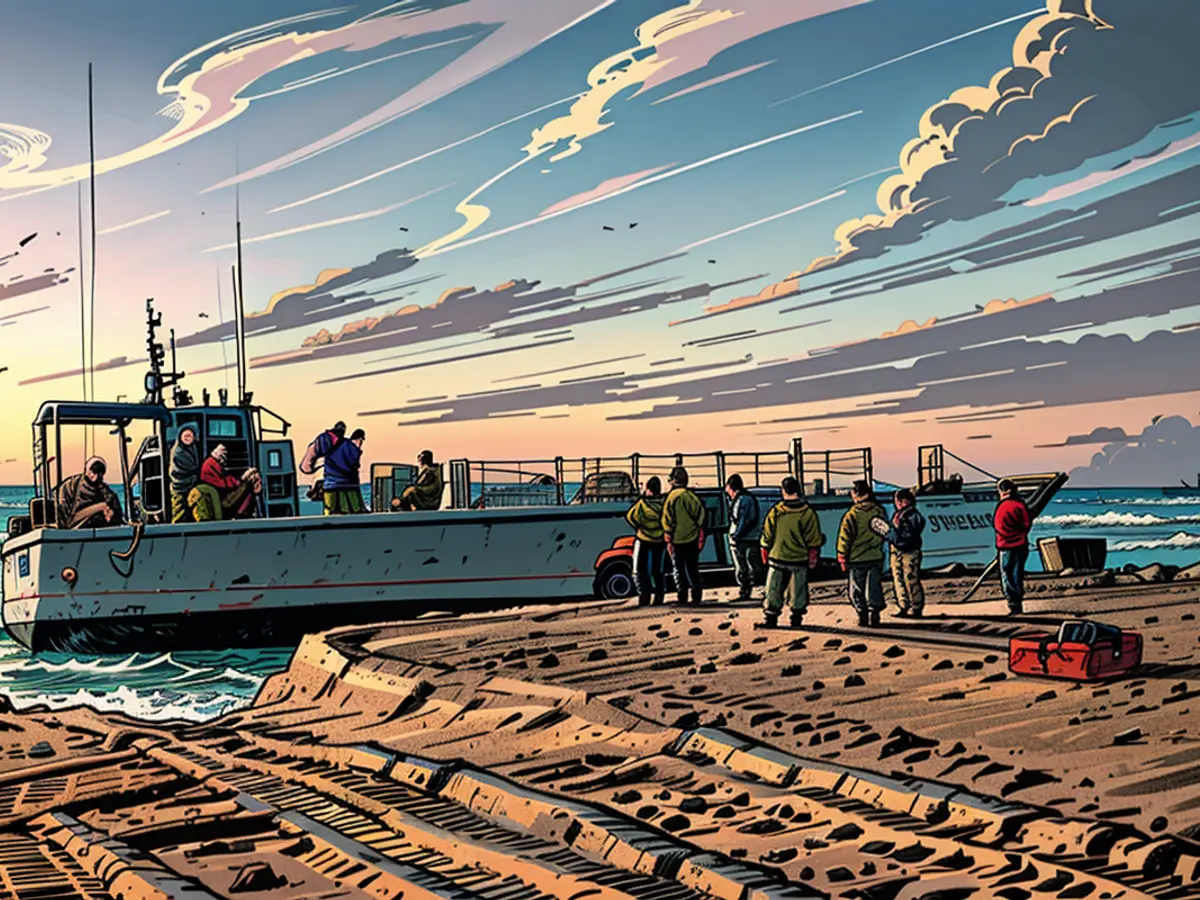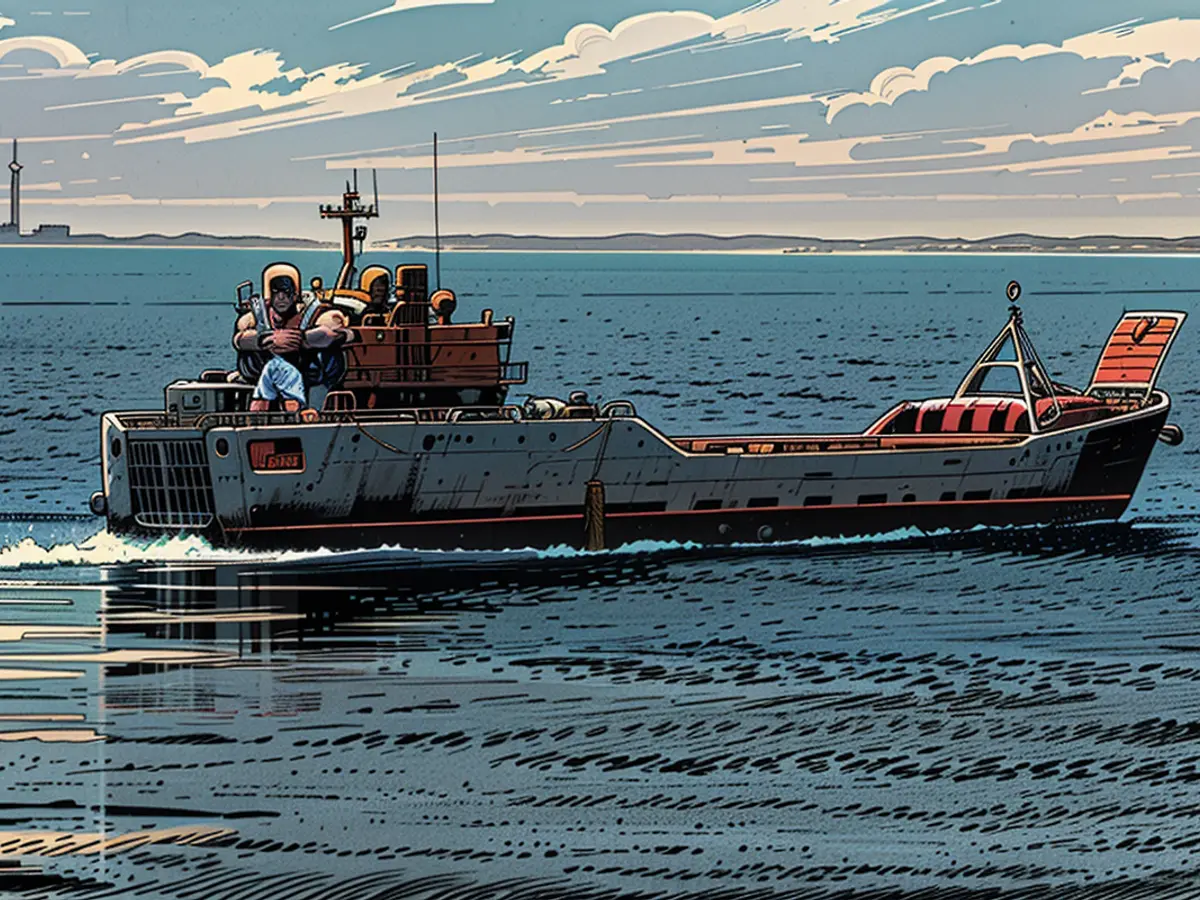Examination reveals substantial concerns with the US Army's watercraft fleet.
The Government Accountability Office revealed a report on Wednesday, revealing numerous challenges plaguing the Army's watercraft, impairing the Army's capacity to fulfill its objectives in the Indo-Pacific region, where the demand for Army watercraft is at its peak.
In accordance with Army regulations, the watercraft should maintain a minimum of 90% operational readiness, implying they are equipped and prepared for their designated tasks. However, this year, these watercraft have been operational less than 40% of the time. Overall, the watercraft fleet has seen a considerable decline since 2018, shrinking from 134 vessels to 70, mostly due to the divestment of watercraft in 2018 and 2019.
As per the report, this poor operational readiness and the diminished fleet size have eroded operational readiness and capability to meet mission requirements. Furthermore, with such low operational readiness, normally fewer than 50% of the watercraft are operational at a given time.
This year, Army watercraft faced severe criticism during the troubled temporary pier mission designed to boost humanitarian aid to Palestinians in Gaza. CNN reported in June that the watercraft responsible for the temporary pier, named the Joint Logistics Over the Shore (JLOTS), were underresourced and poorly maintained by the Army.
A retired warrant officer and former chief engineer on Army watercraft voiced his concerns to CNN, stating, "Army boats have not been ready, capable, or in a mindset they’ll have to do something dangerous or in the real world … for decades now."
After the conclusion of the temporary pier mission — which was operational for approximately 20 days at a cost of $230 million — the military requested support from civilian contractors to transport the Army's watercraft back to the US. A defense official stated that it was more cost-effective and safer to utilize civilian contractors for this purpose.
Presently, one vessel is being transported back to the US, with two others scheduled for transportation by the weekend. Another vessel is undergoing routine maintenance and is expected to be operational by the end of October. Army spokeswoman Cynthia Smith confirmed these details.
Smith affirmed that the Army is actively engaged in rectifying the deficiencies in its watercraft capacity as a whole, prioritizing the improvement of the current fleet and investing in a modernized fleet to cater to the needs of the 2040 force.
Col. Dave Butler, speaking on behalf of Army Chief of Staff Gen. Randy George, suggested that the Army is contemplating replacing its current fleet of watercraft with autonomous vessels in the future.
Butler reasoned, "What we observe is the oil industry and other shipping industries adopting this trend, and it's happening worldwide. There's no reason the Army shouldn't be considering this … leaders from ship level up to the Pentagon are examining this and determining the best way to deploy our forces."
The report issued by the GAO reveals that "significant maintenance challenges" have contributed to the watercraft's low operational readiness, worsened by "aging vessels, supply shortages, and obsolete parts."
The report provides an instance of a Landing Craft Utility vessel that has been under maintenance since 2018. Initially projected to be operational in January 2021, this vessel experienced delays of at least three years due to the need for extensive repairs to over 40% of the boat's hull.
The additional scope of work triggered further delays and escalated costs beyond the initial maintenance estimate by over $1.2 million, as per the GAO report.
Another example cited in the report mentions the Army identifying issues with the ramp on an LCU in 2010, used for loading and unloading people or equipment. The report notes that "despite the risk of catastrophic failure and loss of life," the ramp components essential for safety were not replaced until after a GAO briefing in 2023, decades after initial concerns were raised.
An evaluation of all LCUs following the GAO briefing discovered that roughly one-third of the vessels did not pass inspection and required repairs.
The report concluded with Army Secretary Christine Wormuth affirming that the Army is "actively pursuing a holistic approach to mitigate the gaps in Army watercraft capability and capacity." Wormuth also indicated that Army Futures Command is collaborating with US Army Pacific and Indo-Pacific Command to address concerns about the watercraft's mission readiness in the Pacific region.
The report also outlined the Army's consideration of leasing civilian watercraft to fortify its existing fleet and relocating all its watercraft to the Pacific. Butler confirmed that the Army was discussing leasing civilian vessels with Congress and had even hosted representatives in Hawaii to discuss the advantages of leasing.
Lastly, the report noted that the Army had established a governing board in February 2023 to provide oversight to the watercraft, but as of May, the board had yet to initiate key responsibilities, such as determining methods for distributing information to stakeholders and organizing frequent meetings.
Ultimately, Butler underscored, "The Army watercraft is how the ground force, the Army, gets to war."
"Perhaps our naval forces of the future will be entirely autonomous, it's a possibility we're considering," he mentioned. "We're exploring various avenues to upgrade our transportation system for troops, weapons, and supplies, aiming for a modernized approach."
Due to the poor operational readiness and size of the Army's watercraft fleet, politics surrounding military readiness and funding are becoming increasingly important. The GAO report highlights the need for significant investment and reform in the Army's watercraft maintenance and modernization processes.









